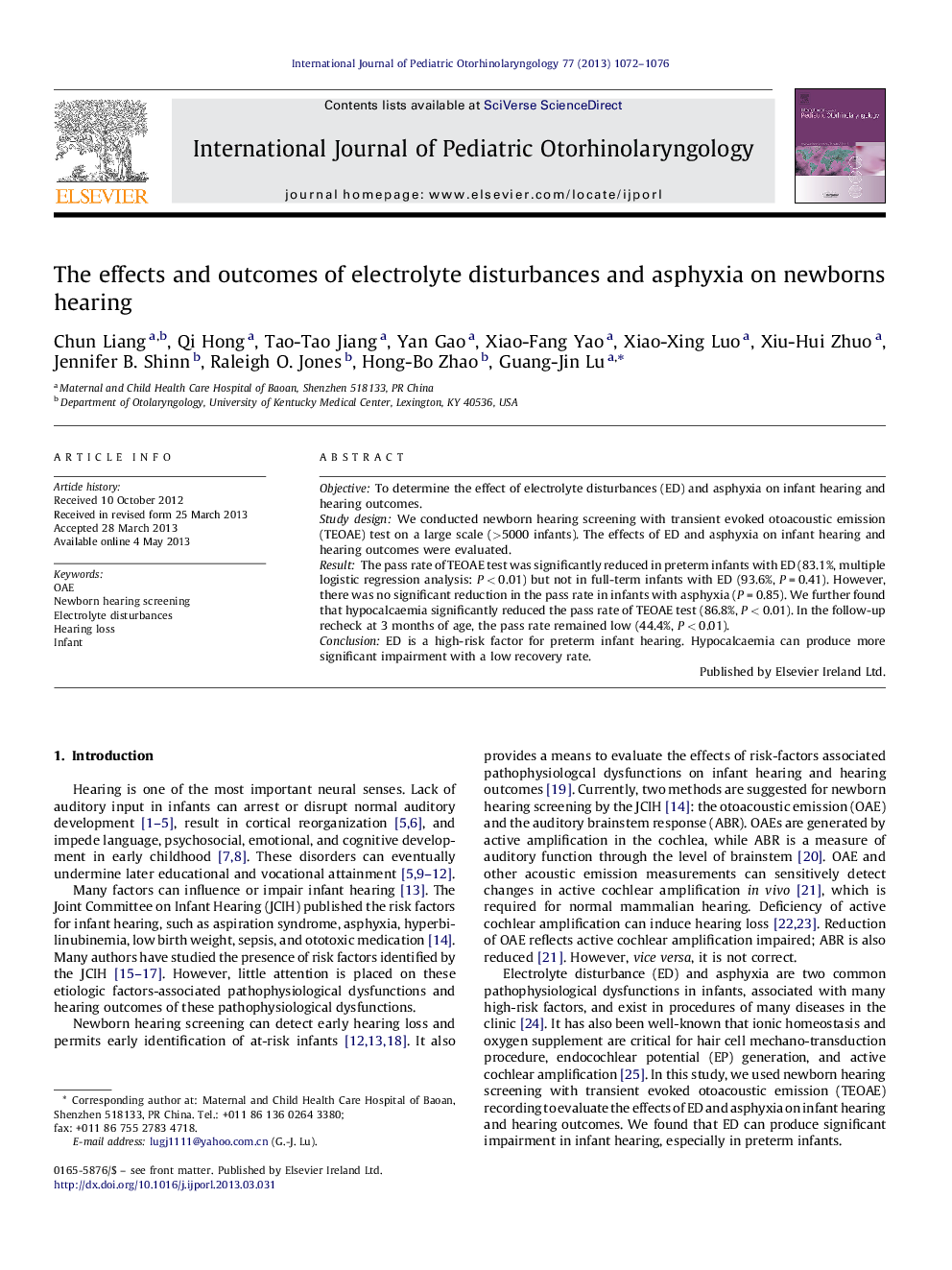| Article ID | Journal | Published Year | Pages | File Type |
|---|---|---|---|---|
| 4112388 | International Journal of Pediatric Otorhinolaryngology | 2013 | 5 Pages |
ObjectiveTo determine the effect of electrolyte disturbances (ED) and asphyxia on infant hearing and hearing outcomes.Study designWe conducted newborn hearing screening with transient evoked otoacoustic emission (TEOAE) test on a large scale (>5000 infants). The effects of ED and asphyxia on infant hearing and hearing outcomes were evaluated.ResultThe pass rate of TEOAE test was significantly reduced in preterm infants with ED (83.1%, multiple logistic regression analysis: P < 0.01) but not in full-term infants with ED (93.6%, P = 0.41). However, there was no significant reduction in the pass rate in infants with asphyxia (P = 0.85). We further found that hypocalcaemia significantly reduced the pass rate of TEOAE test (86.8%, P < 0.01). In the follow-up recheck at 3 months of age, the pass rate remained low (44.4%, P < 0.01).ConclusionED is a high-risk factor for preterm infant hearing. Hypocalcaemia can produce more significant impairment with a low recovery rate.
